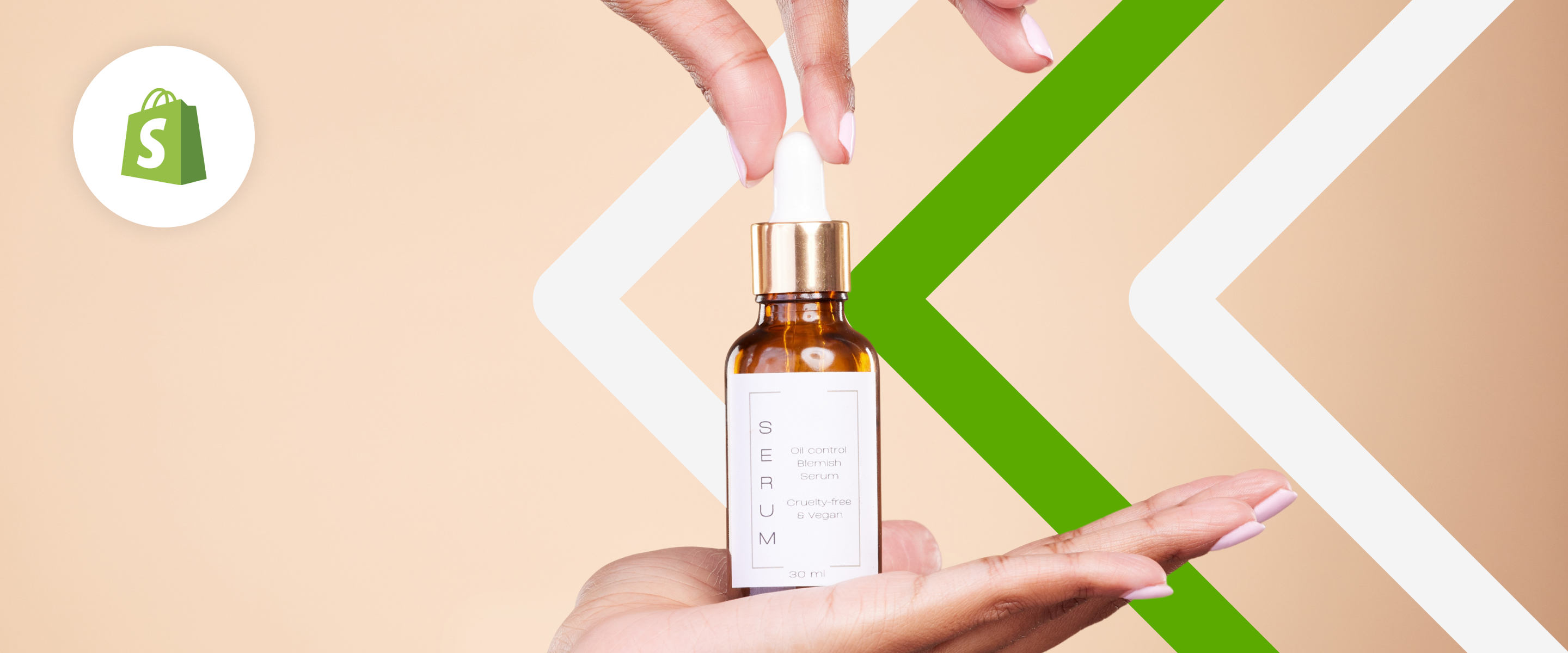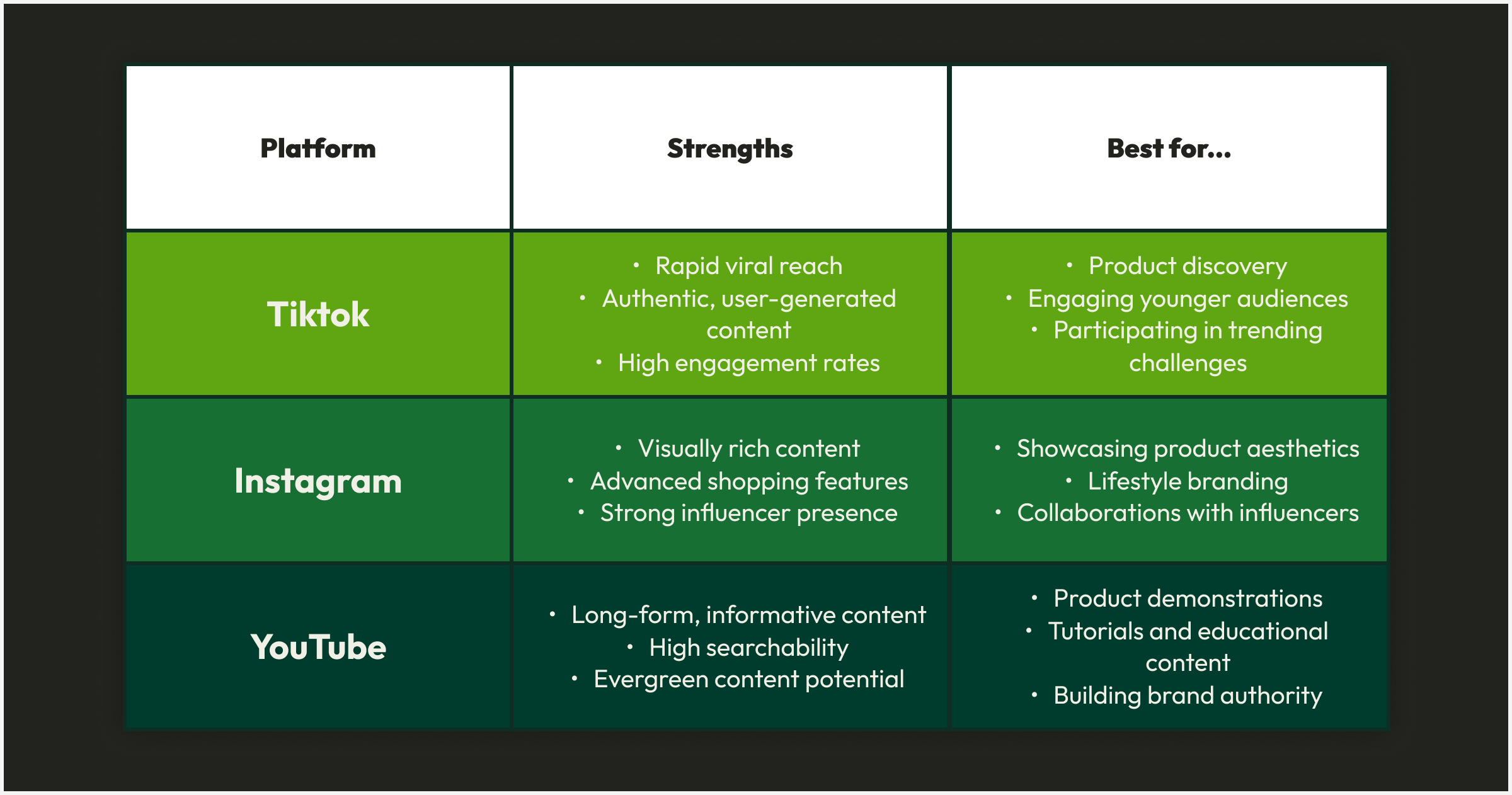
If you’ve been trying to boost Shopify sales with TikTok, Instagram, or YouTube—and getting crickets—you’re not alone.
A lot of brands assume showing up is enough. Post a product, run a quick ad, use a trending sound…and sales should follow, right? But without the right Shopify social media marketing strategy, it becomes just another time-consuming task with little to show for it.
Here’s the truth: TikTok, Instagram, and YouTube can drive serious revenue for Shopify stores. But not with generic content or one-size-fits-all tactics. These platforms reward creativity, consistently, and most importantly, content built with conversions in mind.
In this guide, you’ll learn exactly how to turn your social presence into a Shopify sales engine. Discover which type of content drives real purchases, how to choose between TikTok, Instagram, or YouTube based on your audience, and the common pitfalls to avoid. Whether you’re starting fresh or feeling stuck, you’ll get clear, actionable strategies to boost your Shopify sales today.
Social platforms aren’t interchangeable, and neither are your customers. The key to boosting Shopify sales is aligning your efforts with where your audience actually shops and the content types that showcase your products best. Let’s break down what each major platform offers:

With over 1.5 billion active users, TikTok is no longer just for Gen Z dance trends. In fact, 35% of users are 25–34 and another 19% are 35–44, making it a goldmine for Shopify brands targeting millennials and older Gen Z.
What makes TikTok special? Its algorithm favors authenticity and creativity over polish, giving smaller brands a real shot at going viral, especially with trending audio, challenges, or relatable product content. Plus, TikTok Shop and Spark Ads offer seamless paths from discovery to purchase.
Best for: Visually engaging, impulse-buy, trend-driven products, or live shopping.
Watch out for: Short content shelf-life & need for regular posting.
Instagram is still the go-to for lifestyle content—and it’s built for shopping with 90% of users follow at least one business, and 44% use it to shop weekly.
Its robust suite of tools like product tags, Reels, Stories, and Instagram Shopping, makes it easier than ever to sell without sending users off-platform. If your products are highly visual or lend themselves to influencer collabs, this is your playground.
Best for: Beauty, fashion, wellness, and lifestyle brands.
Watch out for: Heavily curated content can come off as inauthentic if overdone.
YouTube isn’t just a video platform, it’s the second-largest search engine in the world, with users consuming over 1 billion hours of content daily.
This is where long-form, high-intent content thrives. Product demos, tutorials, reviews, and storytelling work incredibly well here—especially for higher-ticket items that need more explanation or proof of value.
Best for: Tech, gear, wellness, home goods—anything that benefits from deep dives
Watch out for: Higher production time and slower growth curve.
Even the best intentions can backfire on social media. Before diving deeper into selling effectively, it’s crucial to recognize and avoid common missteps that sabotage your Shopify store’s potential. Here are four key pitfalls brands often overlook (and how to correct them quickly):
It’s easy to confuse visibility with success on social media. Getting likes, shares, or views might feel like progress, but if those interactions don’t turn into purchases, they aren’t helping your bottom line. Social media has an average conversion rate of just 1.81% for Shopify stores, compared to 4.29% for email.
That doesn’t mean social can’t convert. It means most brands aren’t doing it effectively.
The issue isn’t that Shopify owners aren’t trying to sell. You are. But most sales-focused content just doesn’t land. If your visuals, messaging, or offer miss the mark, your audience will scroll right past. Overly promotional posts, unclear value props, or missing trust signals can kill conversions before they start.
If you want content that converts, it needs to be built for action—not just attention. Understanding the psychology behind buyer behavior can give your content the edge it needs to turn attention into sales. Highlight your product’s value. Show how it solves a real problem. Make it obvious why someone should choose you. Use strong, direct CTAs like “Shop Now,” “See It in Action,” or “Grab Yours Before It’s Gone.” Reinforce it with proof: UGC, quick demos, and real customer reviews all build trust fast.
Check out some recent posts we did for our client, Prime Bites, who generate $100k via Live Streaming in under 30 days! By crafting launch content with the right message, at the right time, we helped them sell out faster and scale smarter:
You also have tools built into each platform that help close the gap between content and conversion. Features like Instagram product tags, TikTok Shop, and YouTube shopping links let people buy without leaving the app. Skipping these tools adds unnecessary steps—and every extra step means lost sales.
If your goal is to boost Shopify sales, your content can’t just look good. It has to connect, convert, and make the next step feel effortless.
To build a social media marketing strategy that actually drives Shopify sales, you need a plan that’s tied to outcomes. It starts with knowing exactly where your audience spends their time and what kind of content gets them to take action.
Before you create anything, take a hard look at your customer data. Are you targeting Gen Z with trend-forward products? TikTok is your best bet. Selling wellness or beauty products to millennials? Instagram might be your go-to. The goal isn’t to be everywhere—it’s to focus on where your buyers already are.
Once your platforms are locked in, get specific about what success looks like in a realistic way. After all, most consumers won’t buy a product the first, second, or even third time they’ve seen it. If you’re a newer brand, or newer to social media, sales should not be your first success metric. Start by aiming for growth in reach, engagement, or site visits. Sales come later, once your audience knows, likes, and trusts you.
When it comes to metrics, measure what actually matters. As we mentioned earlier, sales likely won’t come right away—especially if you’re still building your audience or figuring out what content resonates. Before you can expect conversions, you need to see steady growth in the signals that lead to sales: reach, engagement, and clicks.
Focus on getting the following metrics in line first:
As you being to post regularly, map your content to real business moments. Product drops, restocks, seasonal launches are perfect examples of this. Your calendar should reflect the reality of what’s happening in your store. By planning ahead, you can build anticipation and capitalize on urgency without feeling like you’re constantly trying to come up with ideas for the day.
Social media isn’t a magic button, but when done right, it is a growth machine. If you’re feeling frustrated, overwhelmed, or just tired of seeing no return on your efforts, you’re not alone. But you’re also not stuck.
When you create content with focus on the right channels and metrics, growth follows. We’ve seen it firsthand: Prime Bites saw an 82% increase in CTR in just four months, and Apt2B experienced a 622% spike in brand searches on YouTube. The results are real when the strategy is built right.
Remember—sales don’t happen overnight. But with consistent content, platform-native tools, and a clear focus on engagement that leads to action, social media becomes a long-term sales engine.
If you’re wanting to better understand how to increase the performance of your Shopify store, click here for a free, no-string-attched Shopify audit. Included is a cross-channel audience targeting to reach buyers wherever they are, so you won’t have to guess which social platform is best for you.
